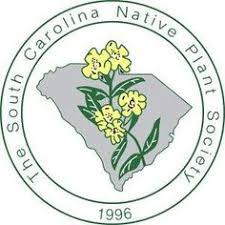As part of a new partnership between the South Carolina Native Plant Society (SCNPS) and Clemson University, undergraduate students will be unraveling the mystery of the rare Rocky Shoals Spider Lily (Hymenocallis coronaria) at Parks Mill in McCormick County, SC as part of a Creative Inquiry (CI) course beginning next fall. The 12.8 acre property is owned by Naturaland Trust, managed by the South Carolina Native Plant Society, and protected by a conservation easement held by the Upper Savannah Land Trust. There is a population of Rocky Shoals Spider Lily that runs approximately 150 yards along the shoals of Steven Creek on the Naturaland Trust Property. This rare and beautiful lily is an important part of South Carolina’s natural heritage and probably existed along most piedmont streams prior to hydropower development of shoals and sedimentation of creeks and streams due to agricultural practices. The watershed for Stevens Creek is forested and mostly undeveloped allowing us a glimpse of what plant, fish, and even mussel populations may have looked like prior to European influence.
As a part of this CI, students will research and characterize the Stevens creek run where the Rocky Shoals Spider Lily occurs and at least two additional sites where historic populations existed to determine why the Rocky Shoals Spider Lily has such a robust population along this stretch of stream. Students will collect water quality data and characterize the sites. They will additionally put out game cameras as one hypothesis is that deer herbivory is impacting Rocky Shoals Spider Lilies. Students will also work to propagate Rocky Shoals Spider Lilies in greenhouses at Clemson so that we will have a population we can attempt to introduce to other suitable stream stretches. The SCNPS hopes the students will help to provide information that will help guide future management decisions, locate other important sites for preservation, and further efforts restore the species.
Information provided by: Lisa Lord


